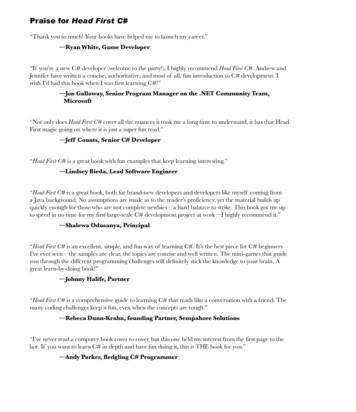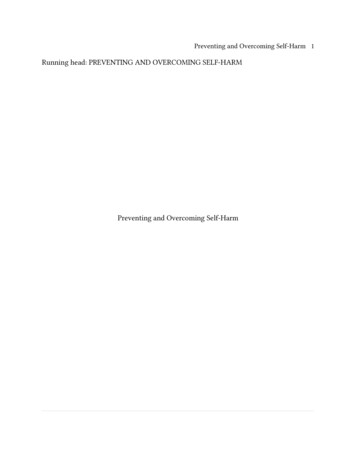
Transcription
Preventing and Overcoming Self-Harm 1Running head: PREVENTING AND OVERCOMING SELF-HARMPreventing and Overcoming Self-Harm
Preventing and Overcoming Self-Harm 2AbstractChildren at the elementary school level face a great number of stressorsincluding educational, cultural, relational (domestic and societal), and recreational.With all the stress and pressures a child must learn to cope. Children often resort todeliberate self harm (DSH).DSH can range from hitting, to scratching, to theprevention of wounds healing, to cutting, and more. While educators may not see eachform of DSH in a general education classroom, a teacher may see a child purposefullydestruct his or her body tissue. It can take the form of pulling out hair, eyelashes,cuticles, etc. This study will offer potential solutions to said stressors, which will, inturn, allow children to replace DSH behaviour. The objectives of this program are toprovide problem-solving techniques to DSH children, to foster a safe learningenvironment, to alleviate stressors due to misunderstandings of academic expectations,to assist parents and teachers in setting realistic goals for a child, to promote betteremotional experiences for DSH children so that they can know how to regulate whatthey are experiencing, to make academic, social, and psychological guidance availableto DSH children, and to provide parents with opportunities to assist the student withschool. This program has shown a decrease in self-harm occurrences in DSH childrenwhile preventing self-harm for those participants that show borderline behaviors.Keywords: stress, children, middle childhood, deliberate self-harm (DSH), problemsolving techniques
Preventing and Overcoming Self-Harm 3Preventing and Overcoming Self-HarmSummary of ProgramChildren in grades three and up are tested on their understanding ofmathematical concepts as well as literacy capabilities (connecting reading and writing).In order to be promoted to the subsequent grade, a child must pass both examinations.The grading policy for passing is currently a four point system. The grading is asfollows: (1) Far Below Grade Standard; (2) Approaching Grade Level; (3) At GradeLevel; and (4) Exceeding Grade Level. If a child receives a one (1) on either of theseexaminations, the child will attend summer school or quite possibly be placed in thegrade for a second year. This places an exorbitant amount of stress upon the childrenand the children’s families to pass both the math and literacy test.Since elementary school classroom teachers are filling each period with rigorouswhole-class/small-group mini-lessons, preparing the children for the content that willappear on State examinations, little attention is given to real-life problem-solvingtechniques. In turn, children are hardly taught in school how to solve problems thatarise, in a healthy manner and, thus, lack techniques to resolve issues.When so much pressure is placed upon a child, as early as the age of eight,which is only a third grader, a child can be afraid to make mistakes. The fear of failing,the fear of being retained in the grade for a second year, the fear of not sounding
Preventing and Overcoming Self-Harm 4“smart,” all contribute to the worry of stating wrong information. Children may thenchoose to remain silent, for fear of being wrong and/or sounding unintelligible.Many of the elementary schools in New York City show diversity within eachclassroom. Any given classroom can reflect an array of socioeconomic backgrounds,ethnic backgrounds, nationalities, and religious backgrounds. This very diversity iswhat makes New York City so unique. Families from across the world are seekingchange—for that of better economic opportunities, better education for their children,fleeing hardships of their country, and in search of better living conditions. Manyfamilies, thus, migrate to America seeking change. When they arrive to this country,they need to find educational establishments for their children.Naturally, thechild(ren) and the family speak a different language and have the challenge ofcommunicating with people in this country. If a child is having difficultycommunicating with his or her teacher and/or peers in school, this can cause a child’sstress level to increase.Since many families have come to America by migrating from their prospectivecountries, families, therefore, speak only in their native tongue.This makescommunicating with school officials (i.e. principals, assistant principals, classroomteachers, cluster teachers, paras, and aids) a difficult undertaking. Each time a parentneeds to speak with a school official, he or she must seek a translator; that task alonecan be rather difficult, being new to a country. In turn, a parent may choose to have
Preventing and Overcoming Self-Harm 5little to no involvement in his or her child’s academic progress because of the greatchallenge it poses.With all the stress and pressures previously stated in this sumSam, a child mustlearn to cope with it all. Children often resort to deliberate self harm (DSH). DSH isincluded, but not limited to, self-defeating thoughts, head banging, hitting, scratching,prevent wound healing, and cutting (Hallab & Covic, 2010). While teachers may notsee each form of DSH in a general education classroom, a teacher may see a childpurposefully destruct body tissue without suicidal intent (Hallab & Covic, 2010). It cantake the form of pulling out hair, eyelashes, cuticles, etc.Children have developed DSH habits as an avoidant coping strategy (Hallab &Covic, 2010).Accordingly, this study, which will herein be referred to as POSH,Preventing and Overcoming Self Harm, will offer potential solutions to said stressors,which will, in turn, allow children to replace DSH behaviour(s).Expected ResultsThis study is focused on elementary school children. Therefore, the issues andoutcomes are for children within the ages of middle childhood (ages six to twelve).While results may be found beneficial to other age categories, it is with the intention tofocus on youngsters as a preventative to DSH or a reactive to DSH (see expectedoutcomes as described in Figure 1). This figure, exclusively created for the POSH
Preventing and Overcoming Self-Harm 6program, lists issues that contribute to children that display DSH and the expectedoutcomes of the POSH program.Figure 1 Expected Outcomes of the ProgramISSUESLack of GuidanceEXPECTED OUTCOMES To make academic, social, and psychologicalguidance available to DSH children.Unclear Feelings and PoorEmotional Regulation Promotion of better emotional experiences so thatthe children can know how to regulate what theyare experiencing.Lack of Problem SolvingStrategies To be able to identify when conflicts arise and toreach a solution. Knowing when a situation requires resilience andwhen it requires the assistance and intervention ofan adult.Academic Stress/Fear ofMaking Mistakes Fostering of a safe learning environment, one thatallows a child to feel that it is acceptable to make amistake. Alleviate stresses due to misunderstandings ofexpectations.
Preventing and Overcoming Self-Harm 7 Accepting of a child’s self. Setting realistic goals.Cultural Pressures The removal of cultural pressures and thereplacement of positive parental support. Understanding that children have stress.Immigration/Language/Involvement of Parent(s) To provide parents with opportunities to assist thestudent with his/her academics. For school officials to accept parental backgroundsand languages.Lack of Support For school officials to fill academic gaps (in small orindividualized settings), which will allow childrento understand whole-class instruction. To promote independence in situations that child isfully capable of working alone. Implementing support systems that makeclasswork, homework, and studying more tangiblefor a student.Literature Review
Preventing and Overcoming Self-Harm 8Deliberate self harm refers to the destruction of an individual’s body tissue,without the intent of suicide (Hallab & Covic, 2010). Hallab and Covic describe howchildhood trauma, including sexual or physical abuse or emotional neglect, have beenreported as common factors for DSH (Hallab & Covic, 2010). Said research is relevantto this program as it supports how emotional stress plays a vital role in a child’s wellbeing. Furthermore, if DSH is not treated early on, it can develop to be more severe andevolve into depression or anxiety. DSH occurs due to an overwhelming amount ofstress, but also because of “poor emotional regulation” (Hallab & Covic, 2010, p.94), thismeans that a child does not know how to cope with what he or she is feeling. Further,relationships are found as a contributing factor to DSH. Relationships with both peersand family have significant impact on social, behavioral, and emotional states ofadolescence (Hallab & Covic, 2010). Since this program is not targeted for adolescence,but rather for youth at the elementary school level, rather than disregard the research,it will be taken under consideration to see if relationships also play an integral part inthe lives of youngsters.In many cases, children exhibit DSH to try to cope when parents divorce.Divorce changes the family unit and children not only have a difficult time handlingsuch change, but they do not know how to communicate what they are feeling. In abook entitled “How Do We Tell the Kids?” it offers parents advise as to how to haveopen lines of communication with their children during the process of divorce. Said
Preventing and Overcoming Self-Harm 9book even contains sample dialogues for a range of age levels and supportorganizations for both parents and children (McKay, 1995, p. 1). For the purposes ofthis program, said book can offer to be an excellent piece of literature for parents ofDSH children. It will open the lines of communication between children and parent(s),which will allow a child to discuss what he or she is feeling. The parent can learn waysto validate how the child feels and even detect when they need outside aid. This bookalso teaches parents “the need for positive communication skills, to listen actively andpatiently, to have a good understanding of the topic, to be clear and direct in answeringquestions and to respect their child’s point of view” (McKay, 1995, p. 1). Since thisprogram aims to involve parents as much as possible in their child’s life, manystrategies set forth in said book, can be adopted for this program. Although this bookis geared toward divorced families, many techniques can be adopted to assist childrenin communication skills and help regulate what they are feeling.In an article entitled, ”Promoting Resilience and Self-Esteem in PriSam SchoolAged Children,” a program was developed for preadolescences (ages ten to twelve)called Reach Rooky’s. Said program has a similar objective to that of this program; thegoal of Reach Rooky’s was intended to foster resilient qualities in children, whichwould prepare them for potential problems in the future (Bourne, 2003). In ReachRooky’s, “The program aimed to assess the levels of self-esteem, self-efficiency, mode,and coping ” (Bourne, 2003, p. 2). This program plans to teach children the exact same
Preventing and Overcoming Self-Harm 10qualities, but rather than target pre-adolescence, it is aimed to target middle childhood(ages six to ten).Children that show DSH behaviors can come to the United States from othercountries. In an article entitled “Self-Concept and Anxiety in Immigrant Children,”families often migrate in search of better employment opportunities, healthier livingconditions, along with improved educational facilities (Roebers & Schneider, 1999). As aresult, families often undergo financial instability, which can be due to unemploymentfrom a parent for a long period of time. Parents may choose to move their family to theUnited States for improved living, however upon arriving to the country they mayexperience hardship, so much that they are unable to find a home to live in. Somefamilies are fortunate enough to be able to enter the residence of another relative orfriend that is already established in the States. While this provides the family withshelter, the migrated family is actually considered to be homeless unless and until theyfind a residence of their own to reside in (whether apartment or home). Such stress tofind housing can cause problems for a child.Migration is a major life event. Such an event often involves profound changesthat include, but are not limited to, a disruption of well-established relationships(Roebers & Schneider, 1999). If a child had established healthy relationships in his orher native country, the separation from those relationships can pose a tremendouschallenge to his or her adaptive capacity in the new country (Roebers & Schneider,
Preventing and Overcoming Self-Harm 111999). More often than not, a child migrating from his or her former country will“Have to learn a new language, adapt to a new educational system, establish a newsocial network, and adjust to new customs as well as standards of normative behaviour”(Roebers & Schneider, 1999, p. 126). Such information is relevant to the POSH programsince public school educators teach a large immigrant community.Although thisparticular study does not indicate whether or not immigrant children cause DSH, itdoes support that stress may be linked to lower mental health, such as escalated anxietyand lower a child’s self-esteem (Roebers & Schneider, 1999).“FRIENDS Parent Project,” another research article, examined the role of parentalinvolvement in a child’s life to determine whether or not it can reduce anxietysymptoms in school children. Said article indicated the severity of anxiety if leftuntreated. “Children and youth with anxiety are vulnerable to substantial risk inadulthood for development of mood disorders, suicide, substance use disorders, andhigher rates of smoking tobacco” (Fukushima-Flores & Miller, 2011, p. 58). The articleindicated that anxiety disorders are frequently overlooked in children as well asundertreated (Fukushima-Flores & Miller, 2011). Research has indicated that childrenwho display anxiety symptoms are likely to have parents with such symptoms.Therefore, “FRIENDS Parent Project” proposed that if they were to effectively treatchildren with anxiety, it was imperative to provide treatment to, also, parents with
Preventing and Overcoming Self-Harm 12anxiety (Fukushima-Flores & Miller, 2011). This is relevant to the POSH program sinceit teaches parents healthy coping strategies, which can be modeled in the home setting.In a pilot study entitled “Treating Depressive Symptoms in Schoolchildren,” theobjective was to provide children with opportunities to better grasp their emotionalexperiences. The treatment allowed children to participate in pleasant activities. Inconjunction with said enjoyable activities, children were then taught that there is arelationship between thoughts, feelings, and behaviors (DeCuyper, Timbremont, Braet,DeBacker, & Wullaert, 2004). Additionally, the study also trained the children withproblem-solving abilities, how to monitor positive events and pleasant emotions, andhow to alter negative thoughts by using counter-techniques (DeCuyper, Timbremont,Braet, DeBacker, & Wullaert, 2004).It was also indicated that every child thatparticipated in the study received a workbook. The treatment plan from this studyreflects most of what the POSH program intends on undertaking. Since “Depressivesymptoms have been shown to be associated with symptoms of anxiety, low selfesteem, acting out behavior ” (DeCuyper, Timbremont, Braet, DeBacker, & Wullaert,2004, p. 105), said techniques will be implemented as a preventative as well as aresponse to DSH. Furthermore, it will be useful to provide participants with handoutmaterials to take home, for future reference.A program of the Psychology Foundation of Canada entitled “Kids Have StressToo,” teaches parents and caregivers the signs and symptoms of stress. The website
Preventing and Overcoming Self-Harm 13offers adults helpful tips on how to help a child handle his or her stress, it makessuggestions on how to build a less stressful home, along with offering the contrastbetween the levels of stress. Since the program has a fully functioning online resource,POSH will help a parent navigate through the website, www.kidshavestresstoo.org sothat he or she can be at ease when referring to the site on his or her own. The site,however, is only written in English, which will not be of service to the migrant familiesthat do not speak the language.In the New York City Public School system, SPINS/SPARK program provideseducation, prevention, and intervention services to children from kindergarten totwelfth grade. Said program strives to instill positive attitudes in/among children. Atrained teacher visits a given classroom, with various units of study ranging fromcommunication skills, assertiveness training, refusal techniques, stress reduction skills,and decision-making skills. This is an outside program that each individual schoolmust elect to take part in. This poses a problem, since not all schools will have thecapital for said program. POSH will, in turn, encounter similar obstacles, due to aschool’s willingness to provide the funding to keep such a program up and running.The final article, “The Promotion of Resilience,” summarized what DSH childrenneed. Ronnau-Bose and Frohlich-Gildhoff (2009) explained that resilience, “The abilityto manage crises, difficult situations, and developmental tasks” (p. 301) is acharacteristic developed throughout early childhood. Research has shown a number of
Preventing and Overcoming Self-Harm 14factors which contribute to a child’s ability to cope, in a healthy manner, when facedwith crisis and/or moderate problems. Ronnau-Bose and Frohlich-Gildhoff (2009) state:On a personal level, such factors include a) healthy self-esteem and a sense ofself-efficacy; b) social skills; c) problem-solving skills; d) emotion regulation; e) ahealthy and realistic perception of self and others; f) stress- management skills (p. 301)Ronnau-Bose and Frohlich-Gildhoff’s project, “Empower Children!” aimed tobuild resilience within children through a variety of methods. Methods included thetraining and supervising of early childhood educators, offering resilience courses,parental outreach, and made outside institutions readily accessible for ongoingcounseling (p. 300). Much like the Empower Children project, POSH, too will teachchildren resilience as well as involve parents throughout the child’s academic journeys.The main distinction is, to wit, the level of parental involvement.In POSH, itunderstands that parents speak a language other than English, thus cannotcommunicate with the general education teacher.POSH aims to open lines ofcommunication between parents and teachers through the accessibility of translators.METHODSDescription of Intervention
Preventing and Overcoming Self-Harm 15In the school setting, referrals will be made based on teacher, counselor, and/oradministrative observations. An educator from the student’s school will complete aTeacher Questionnaire. (Refer to Form 1.) This questionnaire will help decipher if thechild is experiencing stress, anxiety symptoms, and depression or causing DSH. Saidquestionnaire will be rated from 0 (Never), 1 (Very little), 2 (Often), 3 (Very much), to 4(Habitually). If observations are made by a para, school aide, or afterschool counselor,said concerns can be brought to the classroom teacher and/or direct supervisingassistant principal, and the questionnaire can be completed together.Parents whose children have been identified as potential receivers of theintervention will be asked to complete a Screen for Child Anxiety Related EmotionalDisorders (SCARED) questionnaire. (Refer to Form 2.) According to the FRIENDSParent Project (2011), this questionnaire consists of 41 questions, which measure theparental observations of his or her child’s anxiety symptoms (Fukushima-Flores &Miller). Said questionnaire will be rated 0 (Not true or hardly ever true), 1 (Somewhattrue or sometimes true), to 3 (Very true or often true).Additionally, the children will also complete a Screen for Child Anxiety RelatedEmotional Disorders (SCARED) questionnaire. (Refer to Form 3.) As stated in the form,“For children ages 8 to 11, it is recommended that the clinician explain all questions, orhave the child answer the questionnaire sitting with an adult in case they have anyquestions” (Birmaher, Khetarpal, Cully, Brent, McKenzie, 1995, p. 2). This questionnaire
Preventing and Overcoming Self-Harm 16also consists of 41 questions and are also rated 0 (Not true or hardly ever true), 1(Somewhat true or sometimes true), to 3 (Very true or often true).When a child enters the public school system, his or her parent is requiredcomplete a set of documentation so that a child can obtain an OSIS number (anidentification number within the school system).At this time, parents can alsocomplete a questionnaire that surveys which parents in the school are bilingual. Thissurvey will allow the school to know which parents have the linguistic abilities to speakEnglish along with Spanish or Chinese or Arabic, etc. The survey will also ask parentsif they are available and willing to volunteer, from time to time, to assist in the schoollearning environment to translate for Parent-Teacher Conferences. More often thannot, parents are willing to help their child’s school, but are rarely given the opportunityto assist.In addition to surveying the parent population, it is proposed that each schoolhave on the premise 3 (three) to 4 (four) translators, based on the size of the school.Said translators will be imperative to parental outreach, whether written or oral, sincethey can effectively communicate with the families. Also within the school, it isproposed that select teachers, whether for English as a Second Language (ESL) classesor just those whom are bilingual, have the ability to speak a second language that canaccommodate the school population.Said teachers will need to be given a freepreparation period to either translate for other educators in the school as well as
Preventing and Overcoming Self-Harm 17prepare and hold parent workshops about grade expectations. At said workshops,parents will receive clear expectations, in hopes to remove cultural pressures andreplace them with relevant, applicable, individualistic goals for their child.To assist on the academic front, pre-written Peer Tutoring Request forms will bereadily accessible to DSH children. It is proposed that students in good academicstanding, along with suitable communication skills, be available to tutor DSH childrenwithin the school. For assisting (DSH) children in academic need, they will receivevolunteer recognition. At said tutoring sessions, DSH children can receive assistancewith homework, class-work, or studying. It is further proposed that children canparticipate in a mentoring partnership. DSH children can be paired with a suitable,older mentor to develop a sense of comfort. The proposed tutoring and mentorshipsessions will be monitored by a certified individual, to be sure that topics beingdiscussed are relevant to the topic at hand, age appropriate, and effective.Once DSH children have been detected, a classroom teacher may want to makesubtle changes to his or her learning environment. DSH children need to feel that thelearning environment is safe, one in which mistakes are accepted and not ridiculed.Therefore, teachers can elect to see modeled whole-class discussions that areparticularly accepting to a wide range of thinking. Modeled lessons/discussions canreflect a range of participation levels, so long as those answers that are inaccurate arenot mocked.
Preventing and Overcoming Self-Harm 18Another two techniques that can be implemented to help DSH students arebehavior logs and special stones. A behavior log is a small post-it sized paper that istaped to the child’s desk. When it is observed that the child is self-harming, the teacheris to log the time on the paper. This will bring awareness to the behavior that the childis doing. Furthermore, it will be a concrete record of the number of occurrences thathappen each day. The special stone, on the other hand, will be given to DSH students(and preventative participants) to help cope with stress. Rather than self-harm (or forthe preventative participants, have anger outburst or use words that hurt others), thechild can rub the stone so that they feel as if they are “doing” something with theirfeelings.Should a DSH child be in poor academic standing, public schools can enroll saidchild in Academic Intervention Services (AIS). Said services place select children in asmall group setting, so that they can concentrate on either reading or mathematics.DSH children will receive the academic attention that he or she needs, in a group withsix to twelve children.Another method of intervention is through Reading Workshop. A literatureprogram widely used in New York City is from Teacher’s College Institute on TeachingReading. The teaching points listed in Figure 2 have been obtained and adapted fromthe TC program. For this intervention, the teacher will teach a character study unitwherein the children will get to know the main character of a book, envision the main
Preventing and Overcoming Self-Harm 19character of a book, place themselves in the main character’s shoes by understandingthe main character’s situation, feelings, and motives, to see if their character changesover time, and to take away lessons from the books that they read.Figure 2 Character Unit of Study (Created by Teacher’s College, adapted by StaceyShubitz, and objectives written by Christina Rodriguez)Possible Teaching Points1. To pay attention to a character’s actions.Lesson Objectives To see that actions can be external(walks, says, runs, jumps, yells) asHandout 1well as internal (thought, wanted).Suggested Reading: “Tales of a FourthGrade Nothing” or “Noisy Nora”2. To pay attention to a character’s traits. To sort through character traits(positive, negative, and neutral).Handout 2Suggested Reading: “Wanda’s First Day”3. To pay attention to how a character To distinguish isolation fromsocialization.interacts with others.Suggested Reading: “Duck & Goose”4. To pay attention to a character’semotions. To identify stressors; To discuss times when we can
Preventing and Overcoming Self-Harm 20Handout 3relate to positive and/or negativeemotions.Suggested Reading: “Dog Earred”5. To pay attention to a character’s responses;strengths and weaknesses.Handout 4To discuss healthy and unhealthy To identify self strengths andweaknesses.Suggested Reading: Edwurd FudwupperFibbed Big6. To stop and think about the main character in relation to the challenges s/heTo discuss healthy and realistic goalsetting.faces.Handout 6Suggested Reading: “Something Beautiful”7. To pay attention to a character’s goals. To identify when a conflict arises;Handout 5 To discuss resilience. To understand that we respond toSuggested Reading: (revisit) “SomethingBeautiful” or “Thank You, Mr. Falker”8. To pay close attention to what the main
Preventing and Overcoming Self-Harm 21character does, sees, thinks and says.the world around us.Suggested Reading: “A Frog Thing”9. To stop and think about how the main character solves problems, which allowsTo discuss problem solvingtechniques (Conflict Resolution).them to think about how they would reactor respond to that same problem.Refer to Handout 6Suggested Reading: “Double Fudge”10. To stop and think about how we would react if we were in the main character’sTo discuss problem solvingtechniques (Conflict Resolution).shoes.Teaching point may be revisited for twodaysRefer to Handout 6Suggested Reading: “Peter’s Chair” or“Edwina the Dinosaur that Didn’t KnowShe was Extinct” or “Noisy Nora”11. To “walk in the main character’s shoes”by looking for the challenges their To discuss problem solvingtechniques (Conflict Resolution).
Preventing and Overcoming Self-Harm 22characters face and think about how wewould deal with those same challenges.Refer to Handout 6Suggested Reading: “Double Fudge” or“The Brand New Kid”12. To use a character’s traits to make predictions about what is going to happenTo consider how others wouldrespond to problems.next to the main character.13. To notice when the main character is respond to problems;acting out of character.Suggested Reading: “Double Fudge”To consider how others would To be able to identify when friendsor family are acting outside of whatthey normally say and do.14. To notice when a character is changing and to think about who or whatTo be able to identify positive andnegative change;brought about the change. Suggested Reading: “Thank You, Mr.To see that others can be influentialto our choices.Falker” or “Hop, Jump”15. To ask, “What did the main characterlearn that I should have learned,” which To learn valuable lessons from
Preventing and Overcoming Self-Harm 23helps them take away a lesson from theirreading.others; Suggested Reading: “My Name is MariaTo be open to learning new thingsfrom others experiences.Isabel” or “It’s Okay to Be Different”Suggested Readings:Synopsis: The main character of this book is from a Hispanicbackground. The character, Maria Isabel, tells of her experience goingto school in America. This text, narrated by a child, portrays herexperience in a monolingual classroom, while struggling with selfidentity.
Preventing and Overcoming Self-Harm 24Synopsis: Edwina is a dinosaur in town that plays with kids, helpspeople in the neighborhood, and even bakes cookies for thechildren. The character, Reginald Von Hoobie-Doobie, wants toprove that dinosaurs are extinct, but no one w
Preventing and Overcoming Self-Harm 8 Deliberate self harm refers to the destruction of an individual's body tissue, without the intent of suicide (Hallab & Covic, 2010). Hallab and Covic describe how childhood trauma, including sexual or physical abuse or emotional neglect, have been reported as common factors for DSH (Hallab & Covic, 2010).

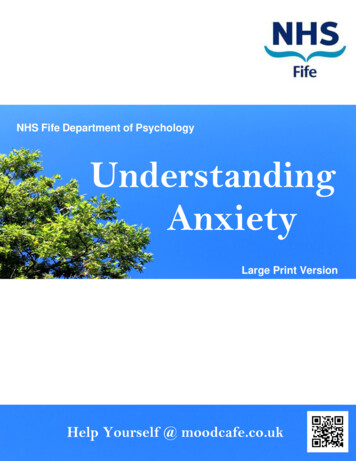
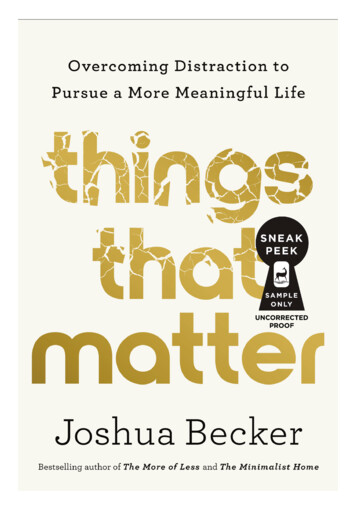
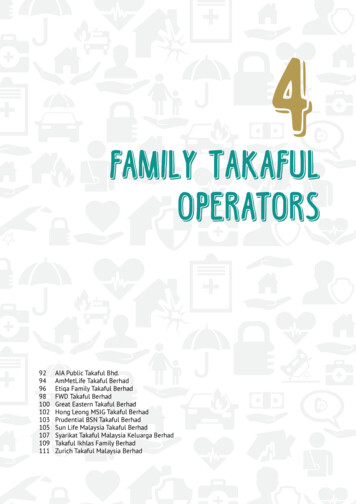
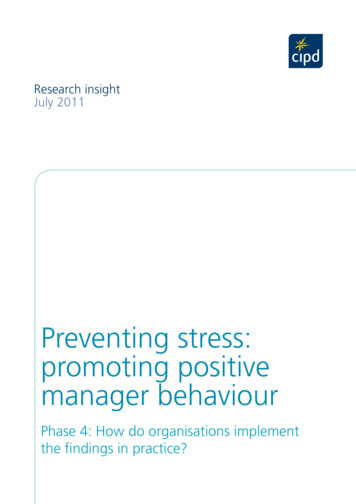
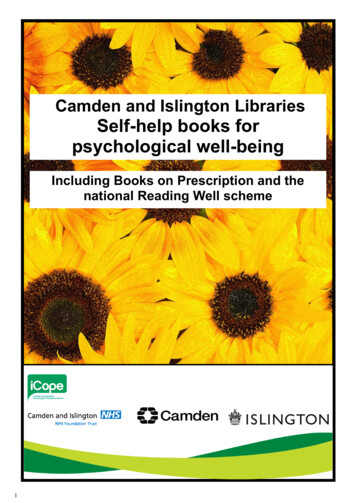
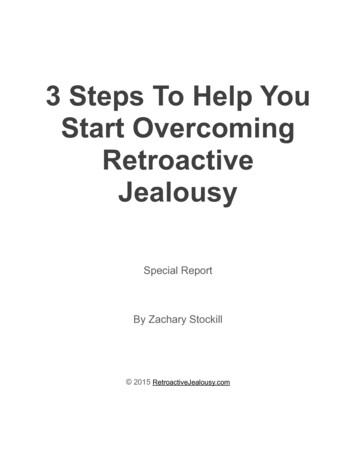
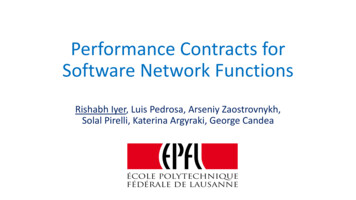

![Drawing the Human Head Burne Hogarth[English] - Internet Archive](/img/29/drawing-the-human-head-burne-hogarth-english.jpg)
